Lab4 and Cholesterol Study
The anti-cholesterolaemic effect of a consortium of probiotics: an acute study in C57BL/6J mice (Part 1)
SUMMARY
In the present study, assessment of the cholesterol-lowering capabilities of Lab4 was made in vitro prior to its inclusion, in combination with Lactobacillus plantarum CUL66, in a short-term feeding study with C57BL/6J mice on a high fat diet.
This in vitro study demonstrated the cholesterol-lowering potential of Lab4 probiotics by their ability to inhibit the process of cholesterol uptake in the gut intestine.
Aim
To examine the cholesterol-lowering abilities of Lab4 probiotics in an in vitro model of the intestinal epithelium.
Method
• Cholesterol-lowering ability and bile salts hydrolase (BSH) activity in Lab4 probiotics was assessed using in vitro models
• The effect of Lab4 probiotics on cholesterol transport was assessed in an in vitro Caco-2 cells intestinal model
Results
Cholesterol removal
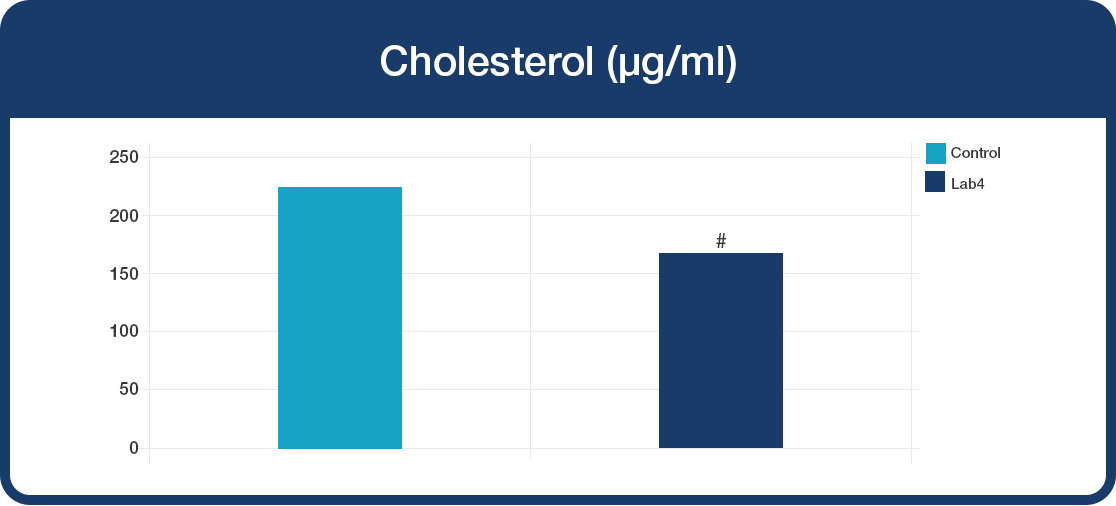
• Cholesterol levels in bacterial culture media were lowered in the presence of Lab4 probiotic mixture (#P=0.076).
Bile salt hydrolase activity
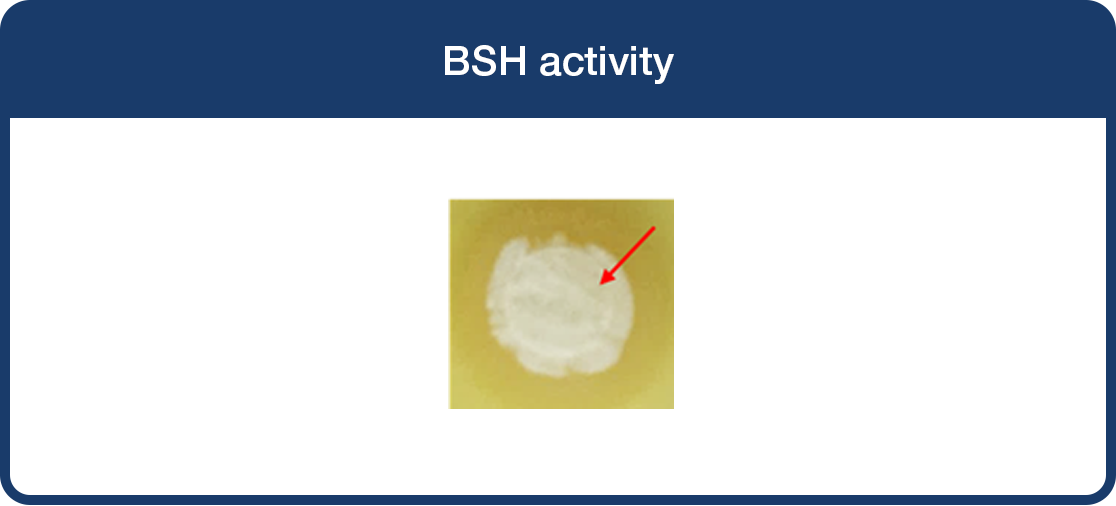
• A white precipitate was observed when Lab4 probiotic mixture was grown in the presence of bile salts, which is indicative of BSH activity.
Cholesterol transport
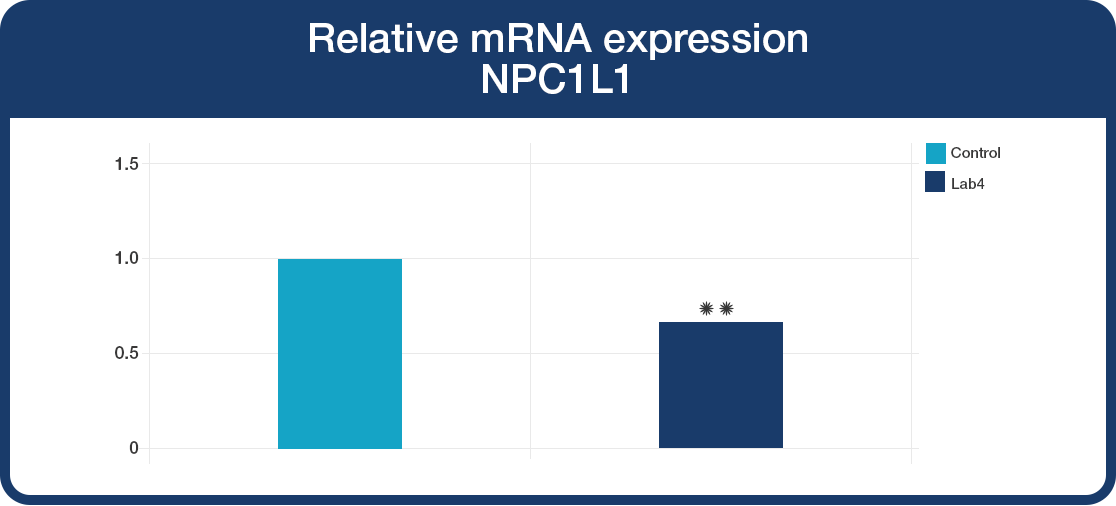
• Lab4 probiotic mixture significantly reduced the expression of cholesterol transporter NPC1L1, which is critical for the uptake of cholesterol (**P<0.001).
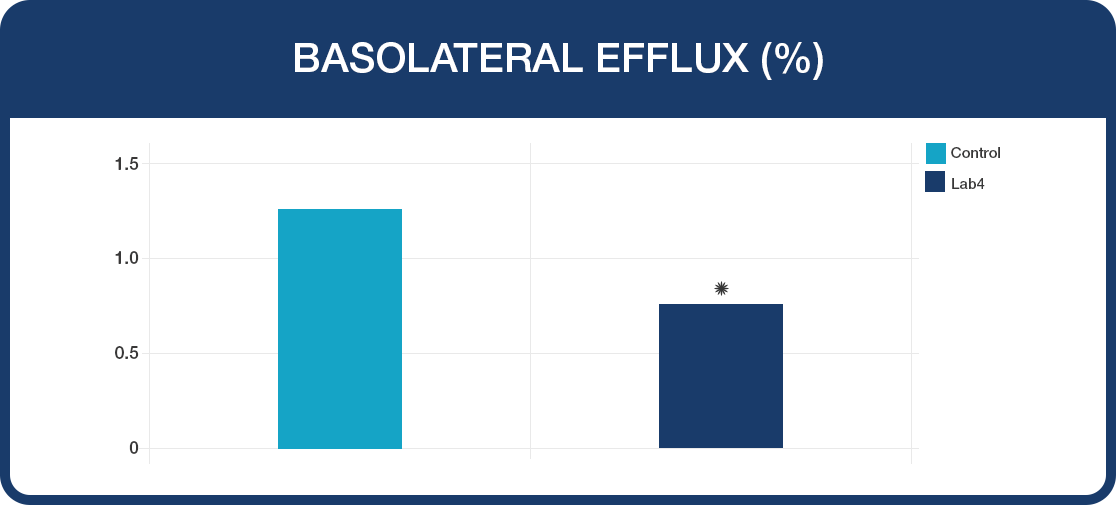
• Lab4 probiotic mixture significantly reduced the efflux of intracellular cholesterol from intestinal epithelial cells into the basolateral (tissue) compartment (*P=0.004).
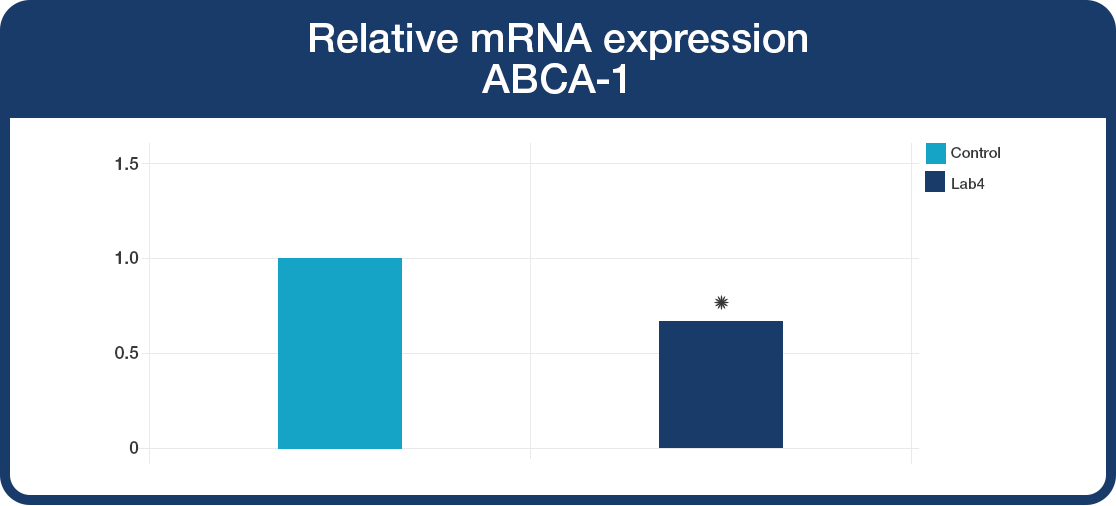
• Lab4 probiotic mixture significantly reduced the expression of cholesterol transporter ABCA-1, which is involved in the efflux of intracellular cholesterol to the basolateral (tissue) compartment (*P<0.01).
Summary Proposed Mechanism of Action

1. CHOLESTEROL REMOVAL [cholesterol is bound or metabolised by Lab4 and subsequently excreted in faeces]
2. BILE SALT HYDROLASE ACTIVITY [deconjugation (modifying) of bile acids leads to their reduced re-absorption and places an increased demand on the liver to synthesise more bile acids from circulating cholesterol in blood to replenish intestinal bile acids lost in faeces]
3. REDUCTION OF CHOLESTEROL TRANSPORT ACROSS THE INTESTINAL EPITHELIUM [3a – reduced expression of the NCP1L1 cholesterol transporter; 3b – reduction in the efflux of intracellular cholesterol to the basolateral compartment (tissue) and reduced expression of the ABCA-1 cholesterol transporter; 3c – no change on the intracellular cholesterol efflux back into the apical (intestinal lumen) compartment]
Conclusion
Lab4 probiotics showed promising cholesterol-lowering potential.

